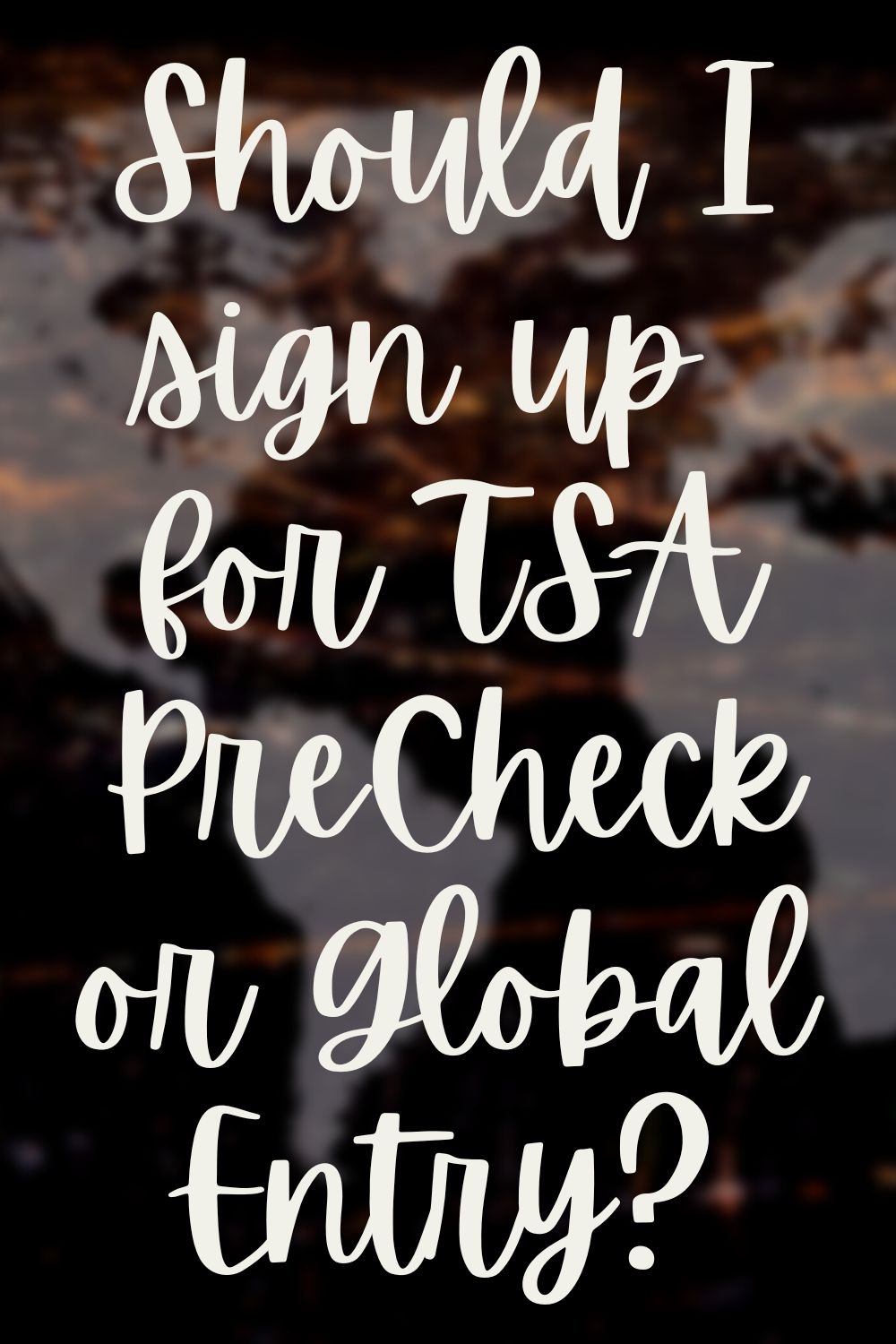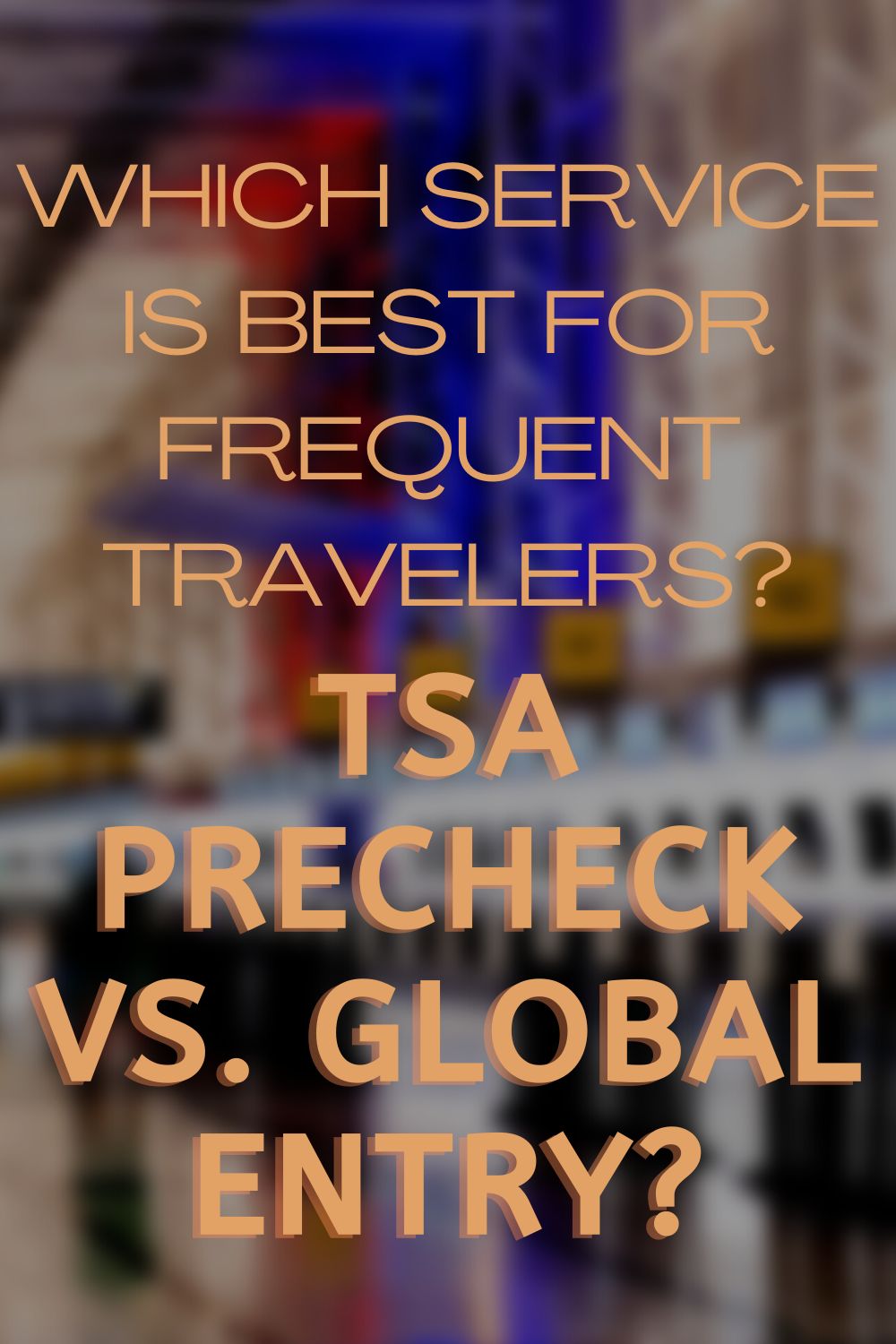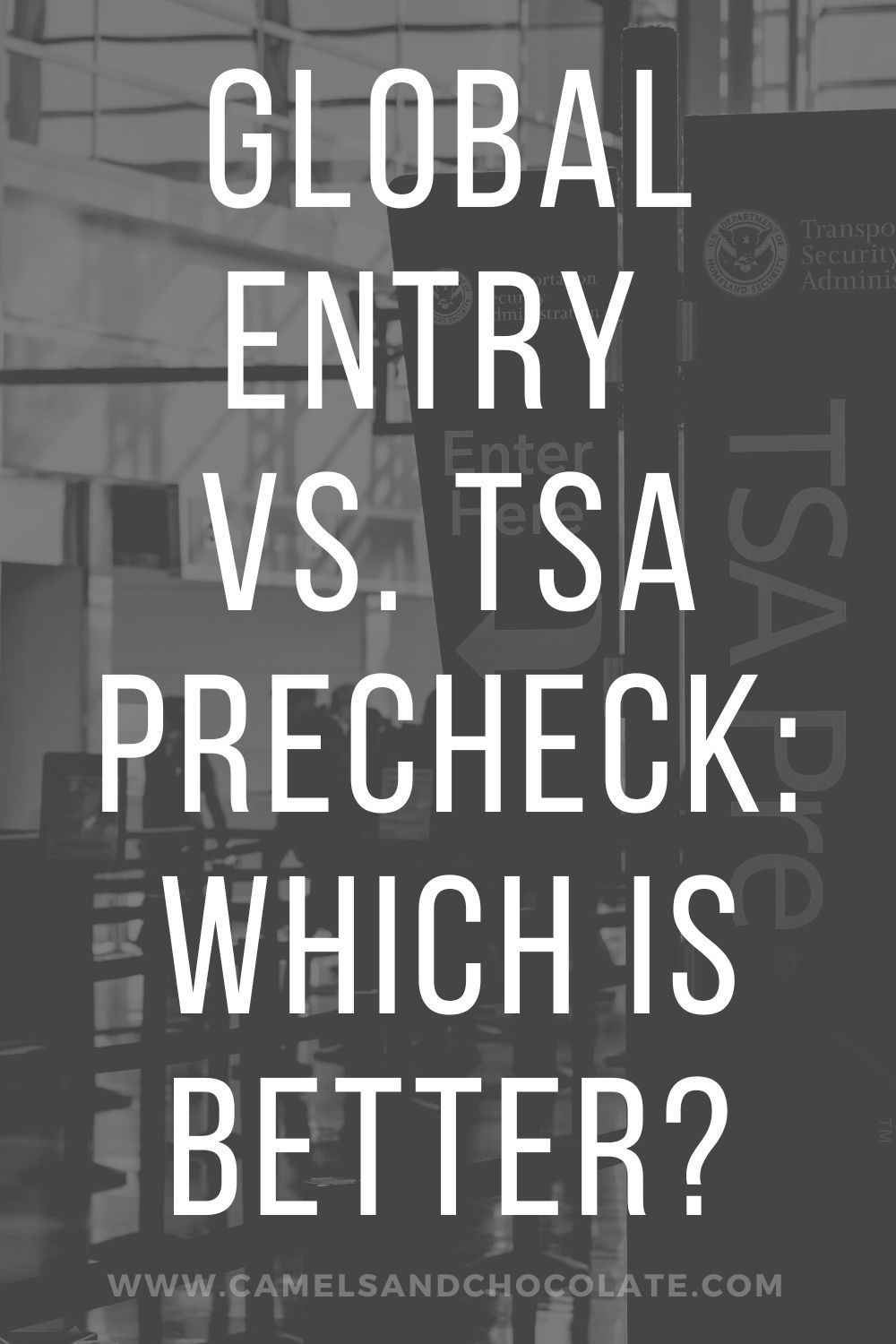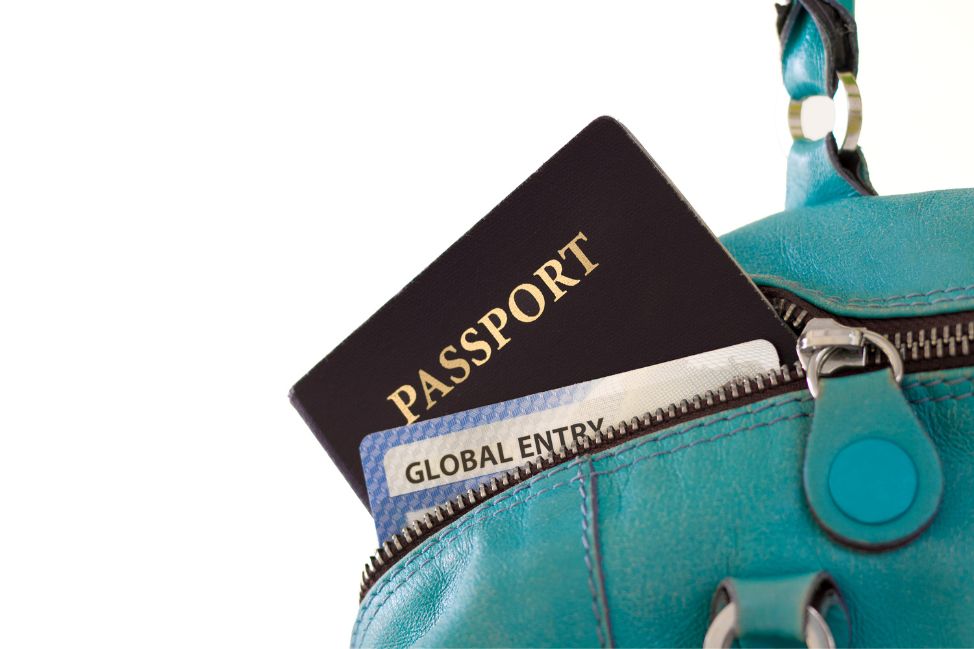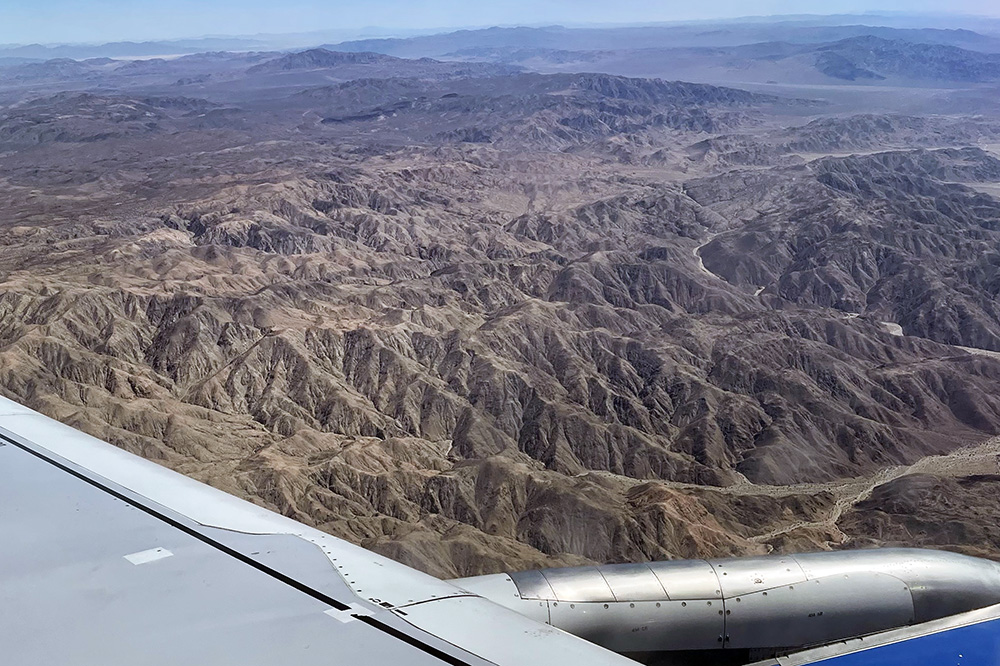As the “revenge travel” trend continues after two years of so many travelers being homebound, the airports are getting more crowded and the security lines longer. So if you haven’t secured a way for expedited security clearance, now is the time to weigh the benefits of TSA PreCheck vs. Global Entry—or maybe signing up for CLEAR.
Picture this: You’re on your first trip in years. You arrive at the airport an hour before your flight with just carry-on luggage for your trip. Only, the TSA line is abnormally long, causing you to either a) miss your flight entirely or b) just squeak by the skin of your teeth. As a frequent traveler, that stress simply isn’t worth it, and for $20 a year, Global Entry and TSA PreCheck are.
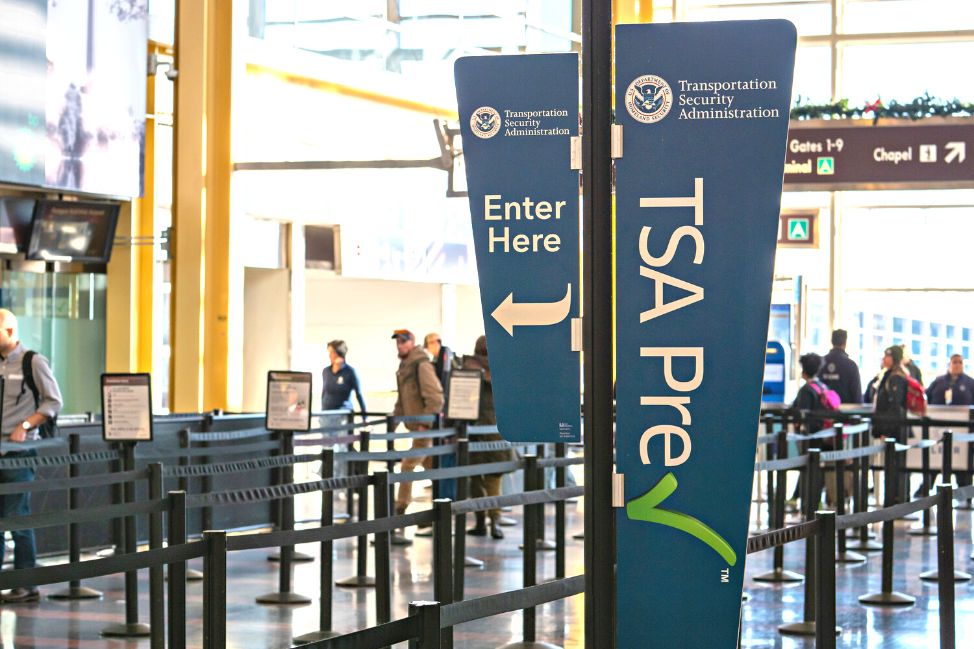
Not sure about your different options or which is the best for you? Here’s a breakdown of each service and who should sign up for which.
This post was last updated in May 2023.
TSA PreCheck: What it is
Both TSA PreCheck and Global Entry allow expedited security. TSA PreCheck enables you to breeze through security at most U.S. airports without removing your shoes, toiletries, belt or electronics from your bag. You also have a dedicated line that typically allows you to skip long waits. The average wait time for TSA PreCheck lines is five minutes, though in smaller airports like BNA, there’s often no line at all.
Related Post: How to Take Better Vacation Photos with Your iPhone
How to apply for TSA PreCheck
You can apply for TSA PreCheck via this online application. It takes less than five minutes, and once you’ve enrolled, you’ll schedule an appointment at any eligible enrollment center.
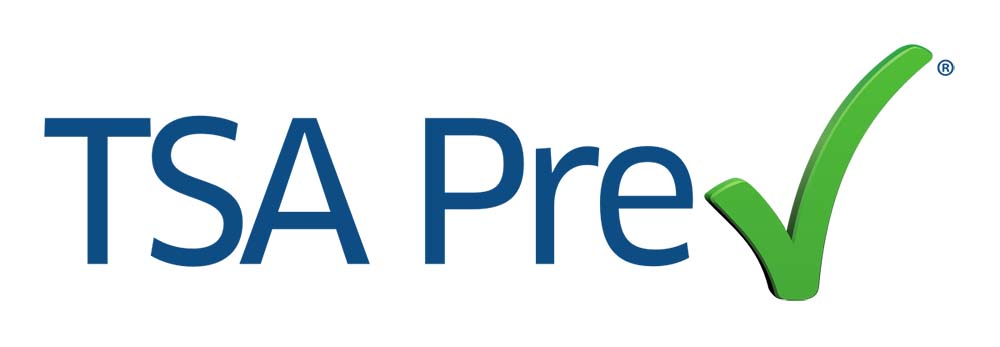
Once you’re approved, you’ll be assigned a KTN (Known Traveler Number) that you attach to all of your flyer profiles. This number will automatically get you TSA PreCheck for all future flights. When you get a boarding pass, you’ll see the PreCheck mark on it. If you don’t see it, you need to visit the ticketing counter and make sure the name on your ticket exactly matches the name on your KTN profile.
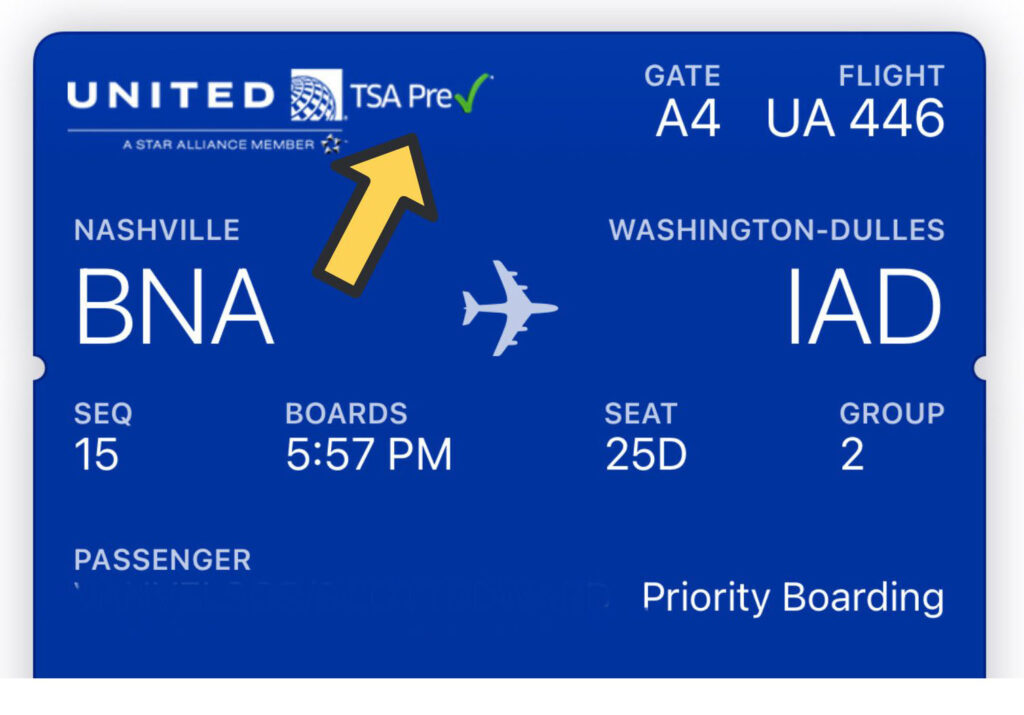
Children 12 and under can join a parent/guardian with TSA PreCheck in the dedicated lanes, but if you’re traveling with kids over 12, you’ll need to have them go through the TSA PreCheck, as well. Children who are 17 of age or under and are traveling alone or without a parent with PreCheck must apply to have access to expedited screening.
Cost: $85 for five years
Why do I want TSA PreCheck?
You want TSA PreCheck to breeze through security and not have to wait in extremely long lines at the airport. Some airports like JFK, however, now have long lines at PreCheck the more that travelers sign up for the program. Even if this is your scenario, I still think it’s worth not having to deal with the hassle of taking everything out of your bag, though.
Global Entry: What it is
Global Entry, also known as the Trusted Traveler Program, is a U.S. Customs and Border Protection (CBP) program that allows expedited clearance upon arrival in the United States. If you travel internationally and dread the wait upon arrival, this program is for you: You go through automatic kiosks at your entry airports, most of which now scan your face and don’t even require your fingerprints or for you to fill out the information on the screen, which is how the program previously worked. The kiosk issues you a receipt that you hand to the customs officer to exit to baggage claim.
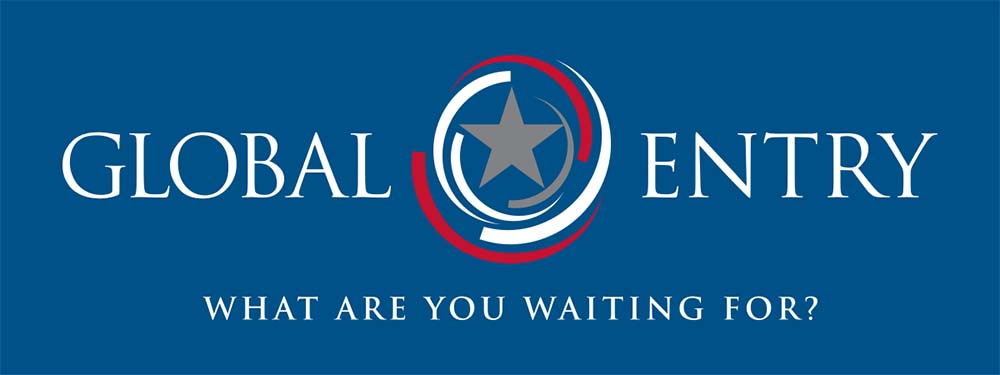
How to apply for Global Entry
You can apply for Global Entry online and if your application is conditionally approved, you’ll be prompted to schedule an interview at a Global Entry Enrollment Center. The interview is quick and painless, and you’ll need your valid passport and one other form of identification like a driver’s license or ID card.
Global Entry makes arriving to the United States from an international destination breezy and reduces the time you have to wait to get through customs. And since Global Entry includes TSA PreCheck, this means you also get expedited security screening on the front end via a dedicated line.
Cost: $100 for five years
Why do I want Global Entry?
You want Global Entry for faster U.S. customs screening for international travelers arriving at U.S. airports. All three times I’ve used my Global Entry in the past year, there’s been no line and I was through customs in under five minutes.
The only reason you may decide for TSA PreCheck vs. Global Entry and not get both at once is if you can’t get an interview time for Global Entry. Many people recently have reported long wait times up to a year to get a Global Entry appointment at the hub closest to them.
I have a pro tip for you, though: You can schedule your Global Entry interview at many airports when you’re flying back from a trip.
Or you can continue to check the Global Entry site for interview openings, which is how I was able to get an interview in Nashville within weeks many years ago when SVV and I first got accepted to the program. I renewed my membership last year and had to go in for an interview, which took less than two minutes.
How to get TSA PreCheck/Global Entry for free
Many travel credit cards now offer a $100 credit for PreCheck and Global Entry every few years, so if you have one of these credit cards, you may be missing out on a free perk:
For any of these credit cards, you’ll receive either a statement credit every four years after you apply for PreCheck or Global Entry, which means you’ll see an $85 or $100 credit to your account after you’ve used that credit card to pay the fee. This also covers your renewal, which is required every five years.
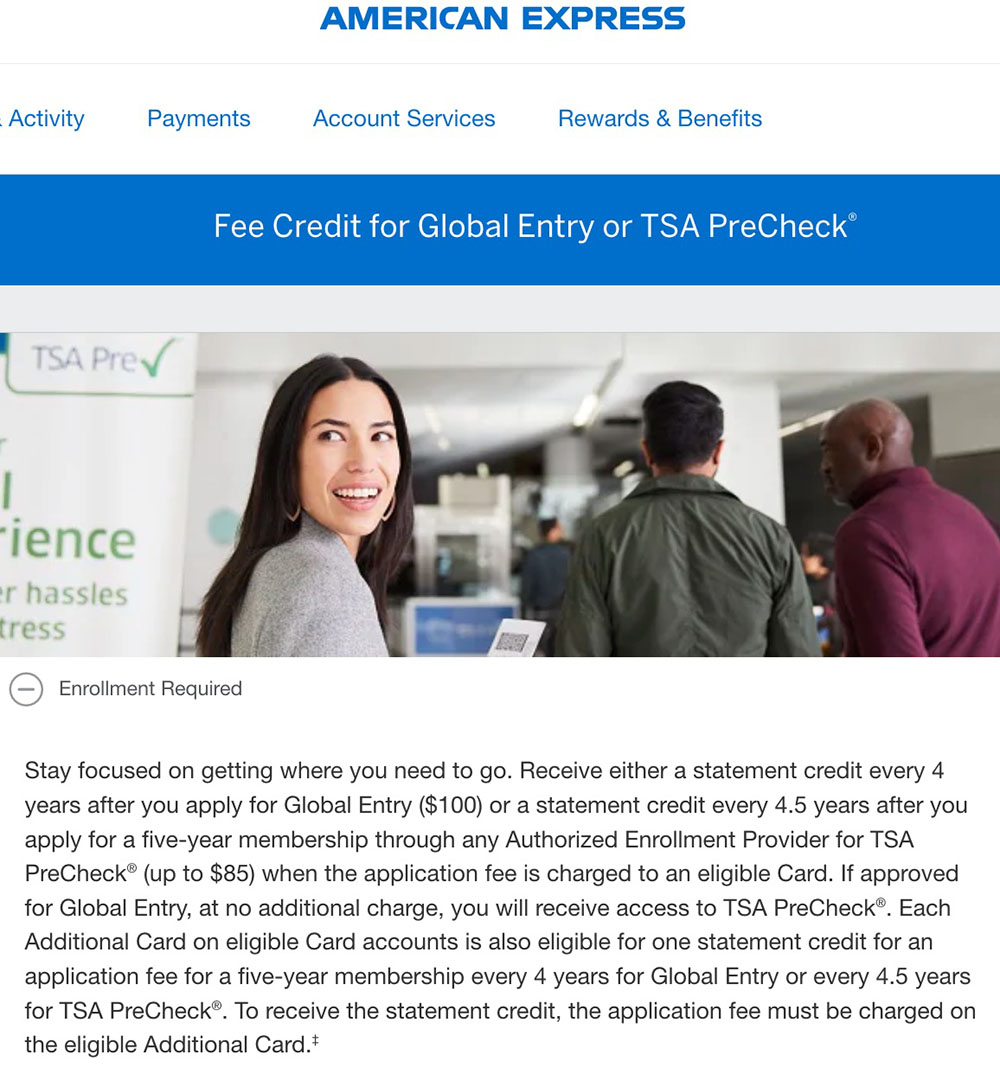
Related Post: How to pack for vacation no matter the weather
A third option: CLEAR
If you have a bigger airport as your base, you may have noticed CLEAR lines when you go through security; they’re being pushed heavily everywhere I’ve flown lately. I had CLEAR when it first launched over a decade ago, then the company went bankrupt in 2009 and all the kiosks were removed. It cropped back up a few years ago and has slowly been on the rise as more airports install these touchless, biometric security kiosks.
CLEAR is certified by the Department of Homeland Security, and in addition to being available at most of the major airports in the United States, it’s also now being used at stadiums and arenas like Madison Square Garden. When we went to the Indian Wells tennis tournament in California earlier this year, we were required to use the CLEAR app to show our health documents. You can also enroll at the airport, which is often more desirable than waiting months for an interview time with Global Entry.
Cost: $189 per year
Why do I want CLEAR?
CLEAR allows you to bypass the normal line and the PreCheck line to step right up to the kiosk and scan your fingerprints and retinas, then proceed through to the luggage scan.
Is CLEAR worth it?
That’s going to depend on your home airport and what other airports you fly regularly. I let my membership lapse twice in the past as CLEAR simply wasn’t as ubiquitous as I needed—or in the airports I frequented. That seems to have changed lately, as there are now several CLEAR kiosks at the Nashville airport, but I still recommend looking at what airports have CLEAR before you pull the trigger.
At $189 a year, CLEAR costs $945 over the course of five years whereas TSA PreCheck is $85 for the same period of time. However, if you have an American Express Platinum card, the annual membership fee of $189 is refunded to your card, so it’s worth getting just to have that as a back-up option to TSA PreCheck/Global Entry. You can apply for an AmEx Platinum here. Or if you already have the card, go to the Benefits section of your dashboard and enroll for free.
Do you have any of these services? And do you agree with my assessment of Global Entry vs. TSA PreCheck?
PIN IT! SAVE THIS POST FOR LATER
PIN IT HERE
